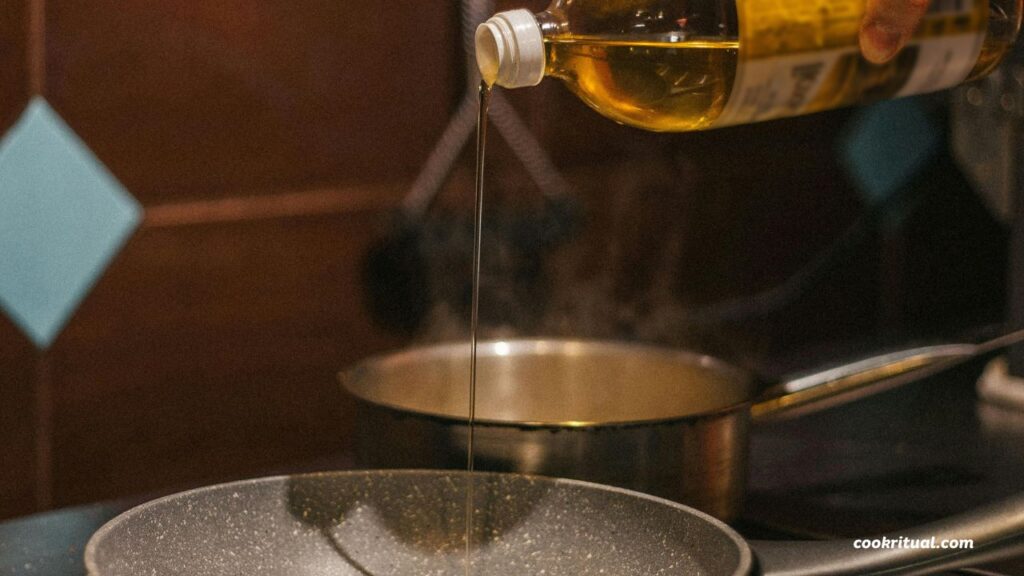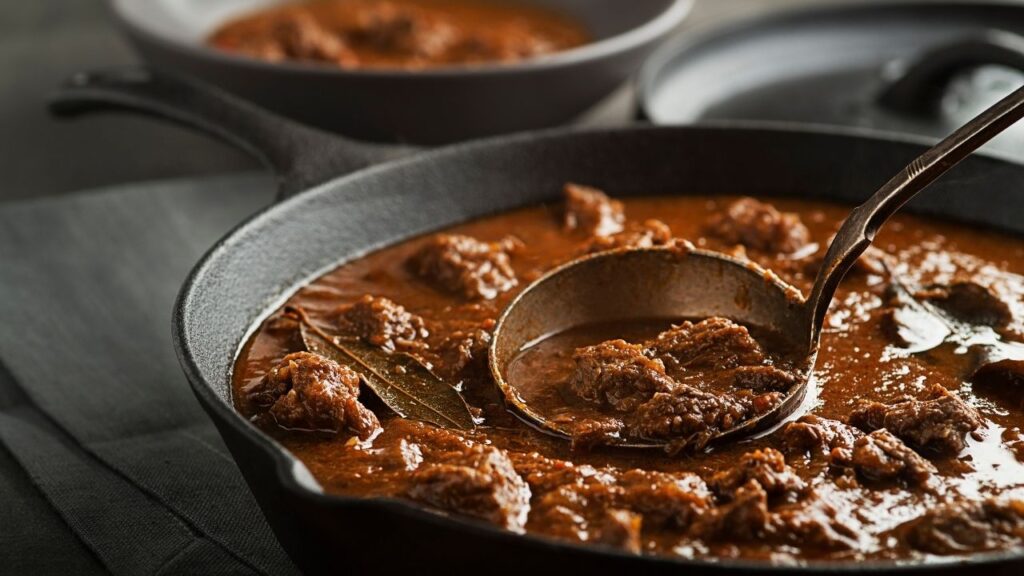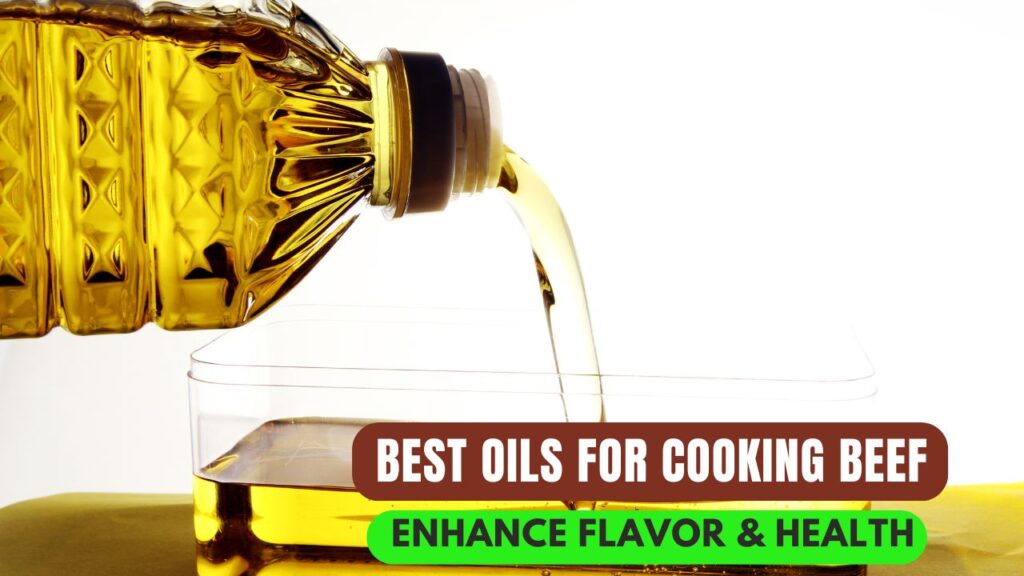When it comes to cooking beef to perfection, the secret lies in the oil. Whether we’re searing a steak, slow-cooking a roast, or grilling a juicy burger, the right oil can make all the difference in flavor, texture, and even healthiness. Many of us have faced the frustration of a smoky kitchen or an oily, greasy finish that detracts from the beef’s natural flavors.
The good news? Choosing the right oil for cooking beef isn’t just for professional chefs. With a little know-how about smoke points, fat types, and flavor pairings, we can all elevate our home-cooked beef dishes to restaurant-quality status.
In this guide, we’ll break down everything we need to know about the best oils for cooking beef, from understanding different oils’ health benefits to matching them with the right cooking techniques. By the end, we’ll feel confident about selecting oils that not only enhance our beef dishes but also support a healthier, more flavorful kitchen.
Contents
II. Understanding Cooking Oils

A. Smoke Points and Their Significance
The smoke point is the temperature at which oil starts to break down and smoke. When oil smokes, it loses its flavor and creates harmful compounds. That’s why it’s important to choose an oil with a smoke point high enough for beef’s cooking temperature.
Here’s a simple smoke point chart for common cooking oils:
| Oil | Smoke Point (°F) |
| Avocado oil | 520 |
| Ghee (clarified butter) | 485 |
| Peanut oil | 450 |
| Canola oil | 400 |
| Coconut oil | 350 |
| Olive oil (extra virgin) | 375 |
| Beef tallow | 400 |
(Source: Harvard T.H. Chan School of Public Health)
B. Types of Fats in Oils
Oils have different types of fats, and each plays a role in how they affect our health and cooking. There are saturated fats (like in coconut oil and beef tallow) that are solid at room temperature, and unsaturated fats (like in avocado and olive oils) that are liquid.
- Saturated fats can add rich flavor but should be used in moderation.
- Unsaturated fats are known for supporting heart health.
Using oils with the right balance helps us cook delicious, healthy beef dishes. (USDA Dietary Guidelines)
III. Top Oils for Cooking Beef

A. Avocado Oil
Avocado oil has a very high smoke point, so it’s perfect for searing beef at high heat. It has a neutral flavor that won’t overpower the beef’s taste. It also contains heart-healthy monounsaturated fats.
B. Canola Oil
Canola oil is versatile and budget-friendly. It handles high heat well and has a light flavor. Some people prefer it for everyday beef cooking, but it’s best to choose non-GMO and minimally processed options. (Mayo Clinic)
C. Ghee (Clarified Butter)
Ghee adds a rich, buttery flavor to beef dishes. It has a high smoke point and is great for roasting and pan-searing. Ghee also contains some beneficial compounds, like conjugated linoleic acid (CLA), linked to health benefits.
D. Beef Tallow
Beef tallow is rendered beef fat that brings an authentic beefy flavor. It’s perfect for traditional dishes and has a high smoke point. Tallow contains saturated fat, so it’s best used in moderation.
E. Olive Oil
Extra virgin olive oil adds a fruity, robust flavor to beef, but its lower smoke point makes it better for medium-heat cooking or marinades. For high-heat cooking, refined olive oil is a better option. (Cleveland Clinic)
F. Coconut Oil
Coconut oil has a tropical flavor and a lower smoke point. It’s not for every beef dish but works well in some recipes that call for a hint of sweetness or for medium-heat cooking.
G. Peanut Oil
Peanut oil has a unique flavor and high smoke point, which makes it great for grilling or frying beef. Its nutty flavor can complement some Asian-inspired beef recipes.
IV. Matching Oils with Cooking Techniques

A. Grilling
For grilling, we want oils with a high smoke point and a neutral or mild flavor. Avocado oil, peanut oil, and beef tallow are top choices. These oils can handle the high heat and help create a nice sear on the beef.
B. Pan-Searing
Pan-searing calls for oils that can take the heat without breaking down. Ghee and avocado oil are perfect for this, offering a crisp sear and enhancing the beef’s natural flavors.
C. Roasting
When roasting beef in the oven, oils like ghee, refined olive oil, and beef tallow are excellent. They can handle the moderate heat and add richness to the dish.
D. Slow Cooking
Slow cooking needs oils that can work at low temperatures. Olive oil, canola oil, or even a small amount of beef tallow work well. They add flavor and help the beef stay tender during long cooking times.
V. Health Considerations
A. Nutritional Profiles of Oils
Each cooking oil has a unique mix of fats and nutrients. This affects both the flavor of the beef and the health impact of the meal. Here’s a simple look at the fat profiles of some top oils:
| Oil | Saturated Fat | Monounsaturated Fat | Polyunsaturated Fat |
| Avocado oil | Low | High | Low |
| Canola oil | Low | Medium | High |
| Ghee | High | Medium | Low |
| Beef tallow | High | Medium | Low |
| Olive oil | Low | High | Low |
(Source: USDA FoodData Central)
B. Oils to Use Sparingly
Oils high in saturated fat, like beef tallow, ghee, and coconut oil, can add rich flavor. But they should be used in moderation to keep meals heart-healthy. For daily use, oils rich in unsaturated fats like avocado, canola, and olive oil are better options. (American Heart Association)
C. Portion Control and Cooking Methods
Even healthy oils should be used in small amounts. Try measuring oils with a spoon instead of pouring straight from the bottle. Also, cooking methods like roasting and searing can use less oil than deep-frying, helping reduce fat intake.
VI. Flavor Profiles and Pairings
A. Enhancing Beef Flavor
The choice of oil can make beef taste better or overpower it. For a mild, buttery flavor, we can use ghee or beef tallow. For a clean, neutral taste that lets the beef shine, avocado or canola oil works well. Olive oil adds a fruity note, while peanut oil brings a nutty hint.
B. Pairing Oils with Beef Cuts
Here’s a simple guide to pairing oils with common beef cuts:
| Beef Cut | Best Oils |
| Ribeye or sirloin (grilled) | Avocado, peanut, tallow |
| Tenderloin (pan-seared) | Ghee, avocado |
| Chuck roast (slow-cooked) | Olive, canola |
| Brisket (roasted) | Ghee, olive |
| Skirt or flank steak (marinated) | Olive, canola, avocado |
(Source: Beef. It’s What’s For Dinner)
VII. FAQs
What is the healthiest oil for cooking beef?
Avocado oil and olive oil are both healthy choices. They have unsaturated fats that support heart health. (Harvard Health)
Can I reuse oil after cooking beef?
It’s best not to. Reusing oil can lower its smoke point and create harmful compounds. For safety and flavor, use fresh oil for each cook.
How do I store cooking oils properly?
Keep oils in a cool, dark place away from heat. This helps prevent spoilage and keeps them fresh longer. For oils like olive and avocado, a sealed bottle helps preserve flavor. (USDA)
Are there oils to avoid when cooking beef?
Avoid oils with a low smoke point for high-heat cooking. Extra virgin olive oil and unrefined coconut oil can burn quickly and change flavor.
VIII. Conclusion
Choosing the right oil for cooking beef isn’t just about taste—it’s about health and technique, too. For searing and grilling, go for avocado oil, peanut oil, or beef tallow. For roasting and slow-cooking, ghee, olive oil, or canola oil work best. By understanding smoke points, fat profiles, and how they match with different beef cuts, we can cook healthier, tastier meals.


